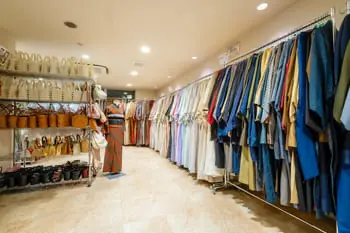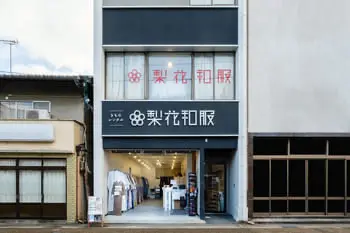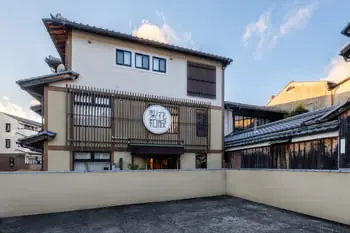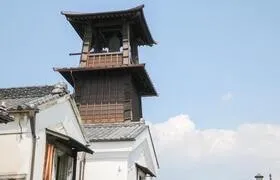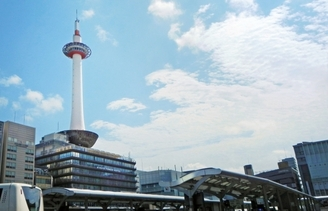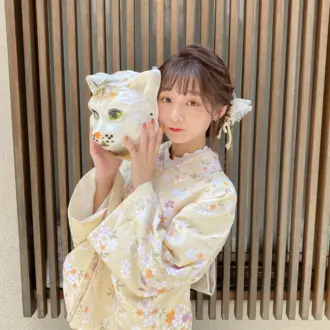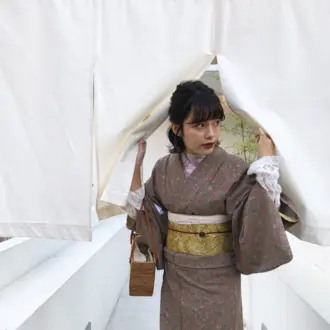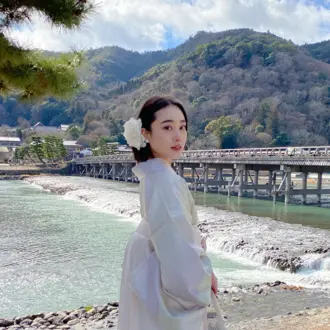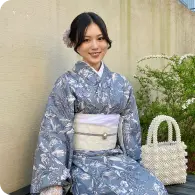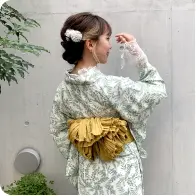10 points for foreigners when renting kimonos in Kyoto!
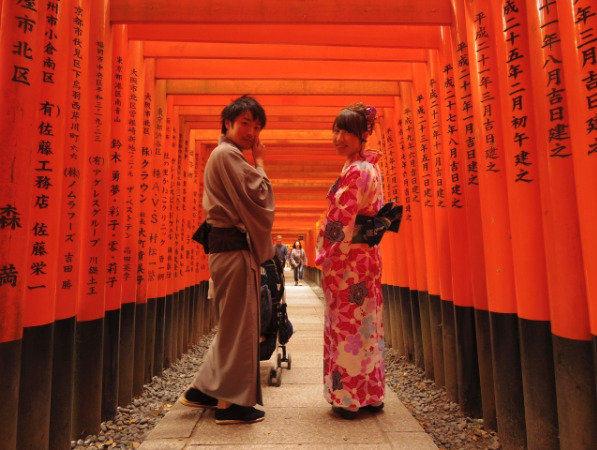
The number of foreign tourists visiting Japan is increasing year by year, and Kyoto, in particular, is popular as a tourist destination.
Many people are interested in strolling through Kyoto’s scenic landscapes while donning traditional Japanese attire, the kimono.
However, due to the differences between kimonos and Western clothing, many foreigners may initially find it challenging. Proper guidance on kimono dressing is essential.
Therefore, we have compiled “Top 10 Tips for Guiding Foreigners in Kimono Rental in Kyoto,” including dressing tips and precautions for walking around the city.
Please refer to this guide and enjoy a wonderful intercultural exchange with foreign tourists!
Interested in classic tourist routes after renting a kimono in Kyoto? Check this out! “Top 10 Classic Tourist Courses for Kimono Rental in Kyoto”
We have listed 10 satisfying tourist courses for foreigners.
For tips on choosing a kimono that suits you, click here > How to Choose a Kimono That Suits You When Renting in Kyoto!
- 1. 1. Points for Dressing in Kimono
- 2. 2. Points on Behavior and Actions in Kimono
- 3. 3. Items to Carry When Wearing a Kimono
- 4. 4. Tips for Handling Seasonal Temperature Variations
- 5. 5. Points to Consider When Moving Around
- 6. 6. Points on Using Restrooms
- 7. 7. What to Do If Your Abdominal Area Feels Tight
- 8. 8. Points to Remember at Tourist Spots
- 9. 9. Points to Consider When Dining
- 10. 10. Do Kyoto Kimono Rental Shops Offer English Support?
- 11. 11. Rescue Tips for a Malfunctioned Kimono
1. Points for Dressing in Kimono
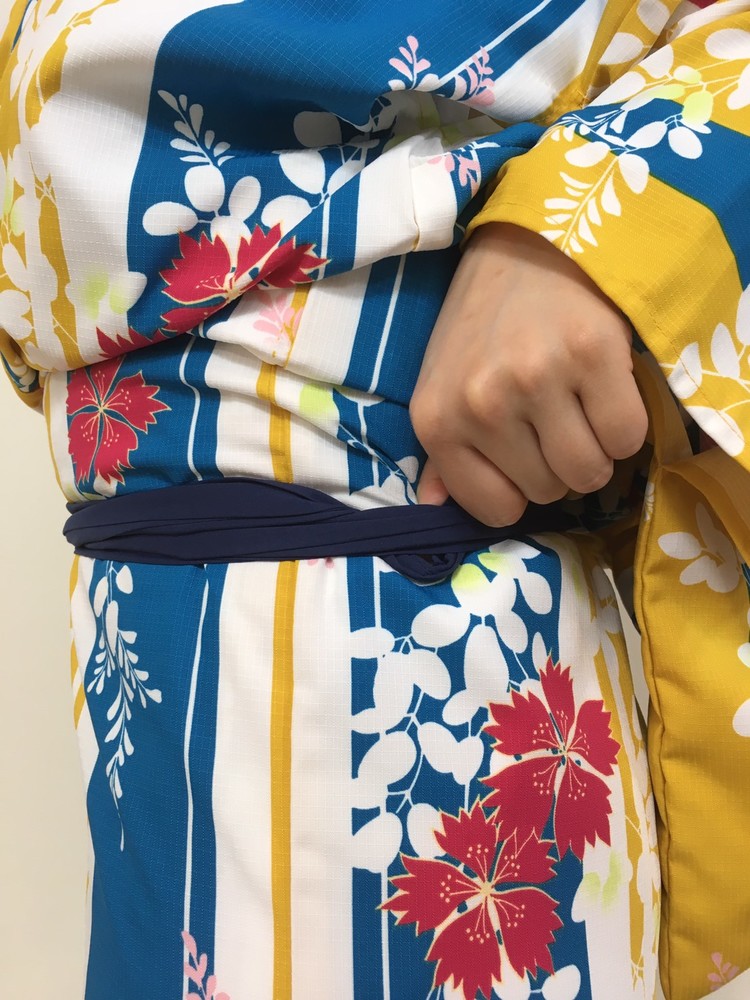
It takes 20-30 minutes for kimono dressing in a rental service. Make sure to use the restroom beforehand.
Once dressed, you cannot undress the kimono. Also, note that changing to a different rental kimono often incurs additional charges.
Chinese customers often request kimono changes.
Wear temperature-appropriate underwear for the dressing process and prepare for body temperature regulation in advance.
– Ensure the collar is not too tight around the neck for easier movement.
– A deeper collar overlap prevents the chest area from being exposed.
– Securely tuck the obiage (sash scarf) inside the obi (sash) to prevent it from slipping out.
– While a higher obi position may look stylish, it can compress the stomach, so aim for a comfortable position.
– Dressing with a tapered hemline helps prevent the kimono from opening and enhances the appearance.
– Choose zori (sandals) with a nose strap that’s neither too loose nor too tight for balance.
During dressing, don’t hesitate to express any discomfort or concerns.
If you’re feeling uneasy, communicate your unfamiliarity and request a slightly looser dressing.
Here’s the English translation of the text you provided, maintaining the HTML tags:
2. Points on Behavior and Actions in Kimono
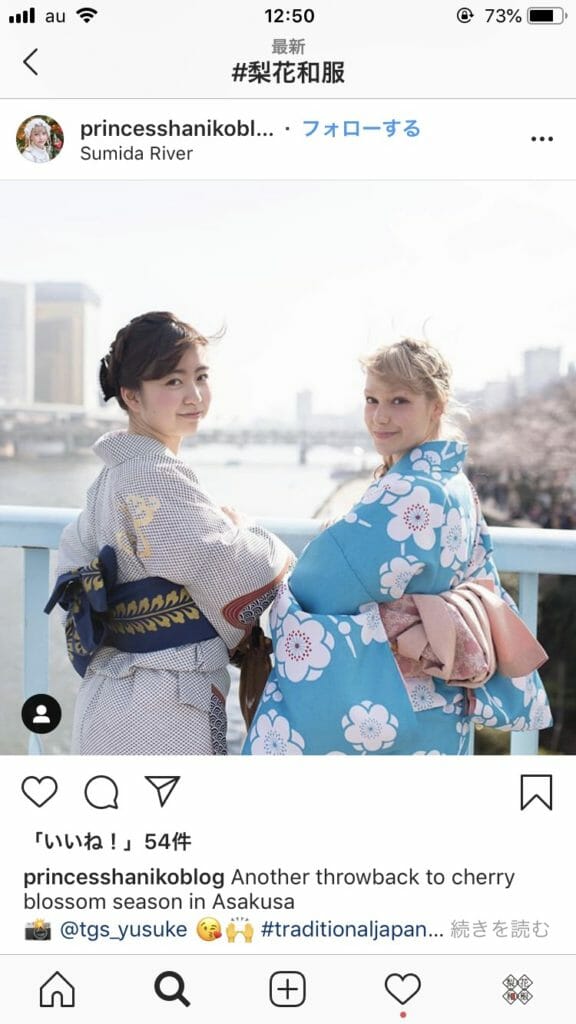
Kimonos, unlike Western clothes, have larger sleeves and hems, so getting used to movements after dressing is necessary.
– Sleeves: Given their larger area, hold one sleeve with your other hand when reaching out or grabbing objects.
– Hem: When moving your feet, lightly grasp the front edge (tsuma) of the kimono with your right hand. This creates space for easier movement and prevents the kimono from opening. It’s also effective in preventing stains from puddles and adds an elegant touch.
3. Items to Carry When Wearing a Kimono
It’s best not to carry a large bag in a kimono as it can rub against the fabric. Store large items whenever possible.
– Small handbag
– Handkerchief
– Wallet and mobile phone or other valuables
Having a waist cord (koshihimo) can be handy if the kimono becomes disheveled for re-adjusting.
4. Tips for Handling Seasonal Temperature Variations
Kyoto, surrounded by mountains on three sides, is known for its hot summers and cold winters. However, this also brings beautiful seasonal changes.
When walking in a kimono, prepare for temperature regulation suitable for the season.
Spring and Autumn Weather
In Kyoto, during spring and autumn, minimum temperatures can be 0-5°C, with maximums reaching 15-20°C, resulting in temperature differences of over 15°C. Crowds can make it feel hotter during the day, with temperatures dropping sharply in the evenings.
Strategies:
– Choose warmer undergarments for fluctuating temperatures.
– Opt for “hitoe” (single-layered) kimonos in spring and autumn.
Summer Climate
Kyoto’s summers are notoriously hot due to high temperatures and humidity in its basin-like topography.
Strategies:
– Stay hydrated and choose summer-appropriate kimonos like “yukata” or “usumono” (light fabrics).
– Use fans or wet towels to cool down your neck and armpits.
Winter Climate
Kyoto’s winters are dry and chilling to the core, making it feel colder than actual temperatures.
Strategies:
– Wear thermal or thick undergarments for insulation.
– Choose “awase” (lined) kimonos for winter to stay warm.
Here’s the English translation of your text, keeping the HTML tags:
5. Points to Consider When Moving Around
- If renting for a long time, it’s not necessary to strictly wear Zori (traditional Japanese sandals).
In Kyoto, many foreigners rent kimonos and prefer wearing shoes instead of Zori for sightseeing. It’s essential to choose the most comfortable option for your travels, without being bound by stereotypes.
Moving around in unfamiliar kimonos and Zori can be challenging initially. When moving around Kyoto in a kimono, using buses, taxis, or trains is convenient for reaching tourist spots.
However, caution is needed during such travels!
When Standing in Crowded Trains or Buses
When renting a kimono in Kyoto, the obi (sash), sleeves, and hem increase your space compared to regular clothes. This can lead to the obi shifting or the kimono getting dirty due to contact with others.
More consideration and awareness are required than when wearing Western clothes. And seeing your effort, others around you will likely show the same courtesy!
When Sitting in Taxis or Other Vehicles
Be careful as sitting back too deeply can crush the shape of the obi. Generally, the obi becomes loose due to friction or rubbing, so lightly leaning back is best.
6. Points on Using Restrooms
- Do not adjust the obi when going to the restroom in a kimono.
There’s a saying, “peeling an onion,” which means you lift the layers – underwear, undergarment, and kimono – one by one from the top when using the restroom.
Take care not to let the obi become loose or undone!
Ensure the hem and sleeves of your kimono don’t touch the floor or walls during this process. Kimonos are generally vulnerable to water!
7. What to Do If Your Abdominal Area Feels Tight
- Insert your thumb under the obi or the cords and pull forward to create some space for relief.
Being unaccustomed to kimonos, the tightness from the obi can cause discomfort. The above method is also effective after meals when your stomach expands. Adjust the position of the obi similarly by inserting a finger and making fine adjustments.
8. Points to Remember at Tourist Spots
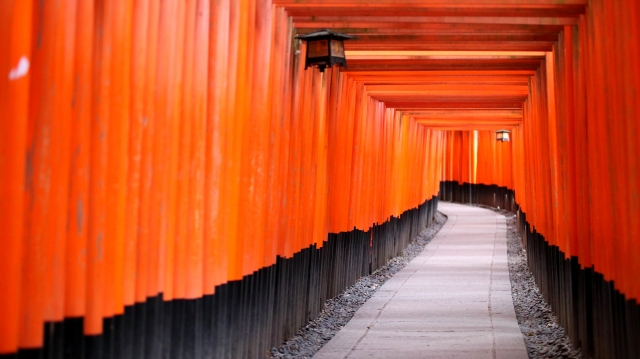
Now, it’s time to explore tourist spots in your kimono.
While it’s essential to abide by the rules at each location, let’s look at specific points unique to sightseeing in a kimono.
For those interested in visiting the popular Fushimi Inari Shrine, refer to this guide:
>> Fushimi Inari Shrine Kimono Rental from 3500 yen | 10 Minutes by Train
Schedule with Plenty of Time
Many of Kyoto’s tourist spots are located on hills, involving a lot of up and down walking. Plus, walking in a kimono tends to be slower than in Western clothes, often taking twice the time.
While it’s natural to want to visit many places during your trip, overpacking your schedule can lead to rushing and potential accidents!
Take your time, double the usual duration for strolling and sightseeing, and enjoy the changing scenery and the flow of the city.
This relaxed pace is part of the charm of wearing a kimono, a unique Japanese experience of “sophistication.”
Considerate Photography
Taking photos in a kimono at tourist sites for memories or social media is enjoyable.
Take plenty of photos, but be mindful not to obstruct others’ paths or photo opportunities.
The kimono is a traditional Japanese garment, and experiencing Japan’s culture of “giving and taking” is also part of the fun.
Interestingly, foreigners in kimonos are a unique sight for Japanese people, and you may be asked to pose for photos. If you’re comfortable, graciously accepting can be a small yet meaningful cross-cultural experience!
Here’s the English translation of your text:
9. Points to Consider When Dining
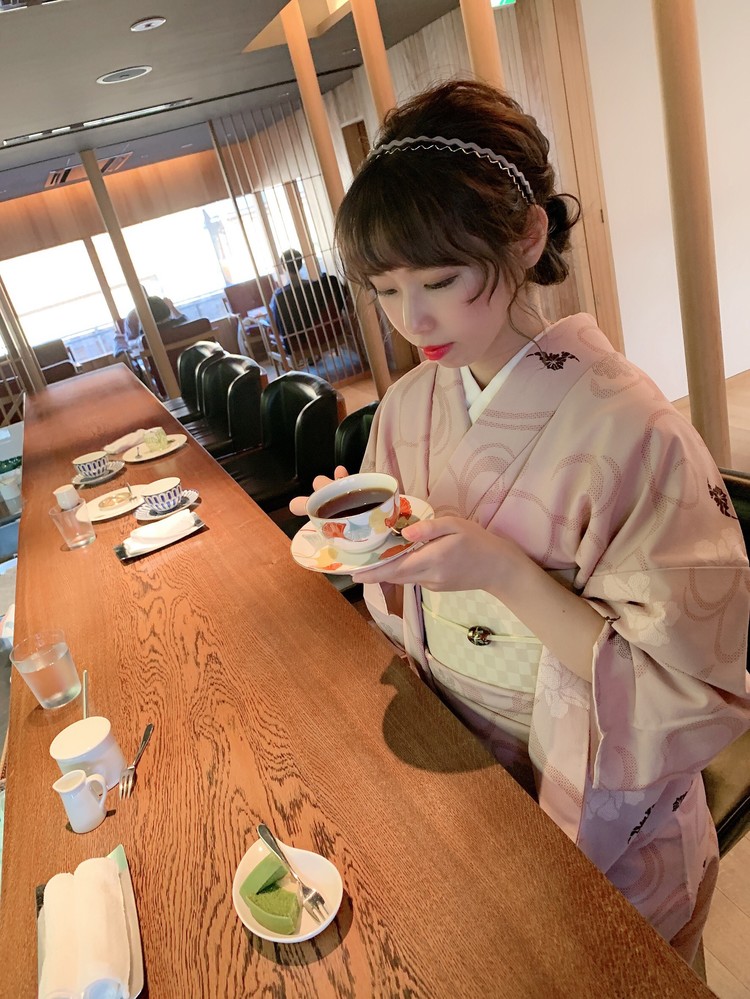
Kyoto offers a plethora of delicious Japanese cuisine. However, dining in a kimono differs from wearing regular clothes and might be confusing at first. Let’s look at some points to consider when dining in a kimono.
Use a Handkerchief or Cloth on the Obi
As a substitute for an apron, tuck a handkerchief or cloth into your obi (kimono belt) to prevent stains.
Hold Your Sleeve While Reaching for Items
During meals, when reaching for items on the table, it’s important to hold your kimono sleeve with one hand to avoid soiling it or knocking over glasses. This not only prevents stains but also presents a polite and elegant appearance.
10. Do Kyoto Kimono Rental Shops Offer English Support?
We’ve listed several points to help foreign visitors avoid trouble, but when you’re out sightseeing all day, issues are bound to arise. Do kimono rental shops in Kyoto offer English support in such situations?
The answer is, “Many major kimono rental shops do.” Smaller, single-location rental shops often can’t afford to hire English-speaking staff due to tight finances. In contrast, larger, nationwide chains are more likely to offer English support, providing peace of mind for visitors.
Introduction: “Tickets in Japan” is an online ticket sales service for international visitors to Japan where you can purchase tickets for sports events, concerts, and theatrical performances. The service also features numerous recommendations for tourist attractions in Japan and information about traditional events in Japan.
11. Rescue Tips for a Malfunctioned Kimono
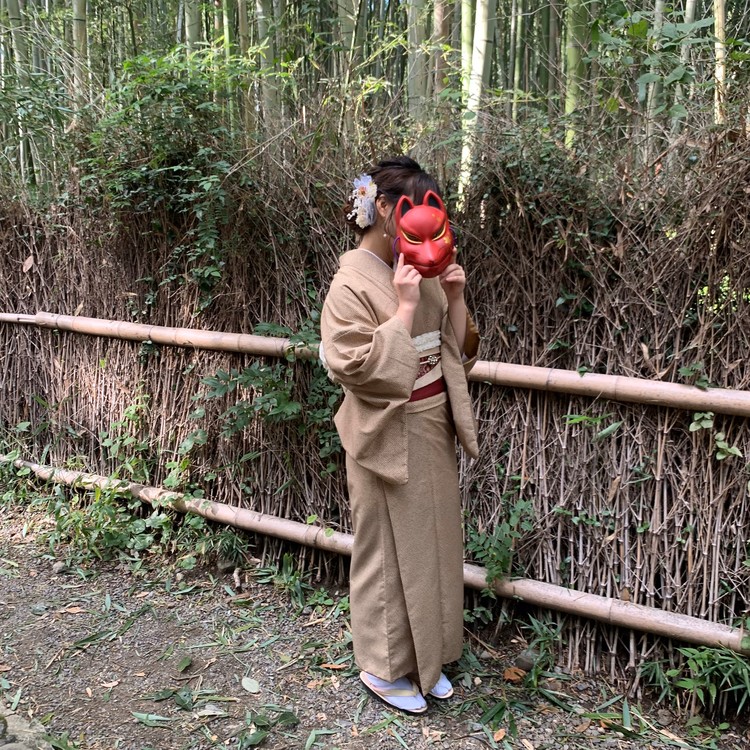
Even with careful dressing, your obi might come loose or your kimono might dishevel during a walk or sightseeing. In such cases, consider asking passersby or elderly people in kimono for help!
Many people in Kyoto can dress in kimonos. Often, they’ll even offer to fix your kimono without being asked. While sometimes jokingly referred to as “kimono police” or “touch-up aunties,” these knowledgeable and experienced individuals can be a great help, especially to foreign guests.
Embrace the wisdom and skills of those who have preserved the art of kimono dressing. How did you find these tips?
Touring Kyoto in a kimono may seem inconvenient for foreigners unaccustomed to wearing one, but a few simple tips can make the experience much more enjoyable.
“Walking in Kyoto in a kimono” will hopefully become a memorable experience that makes visitors feel the essence of Japan!
Introduction: Japan Tours Switzerland offers customized travel services from Switzerland to Japan, including cultural tours, guided experiences, and complete itinerary planning to provide travelers with authentic and seamless journeys tailored to their interests.
About the Author
Rikawafuku has four kimono rental shops in Kyoto – in Arashiyama, Gion, Kiyomizudera, and near Kyoto Station, serving over 180,000 customers annually in 2022. They offer dressing plans from 3500 yen and hair-set plans from 5000 yen, all conveniently located near popular tourist destinations such as Togetsukyo Bridge, Kiyomizudera, Yasaka Koshindo, and Yasaka Shrine.
Rikawafuku Rental Kyoto
Rikawafuku Rental Gion Store
Rikawafuku Rental Arashiyama Store
Rikawafuku Rental Kiyomizudera Store
Rikawafuku Rental Kyoto Station Front Store
Check the Rikawafuku Rental!

